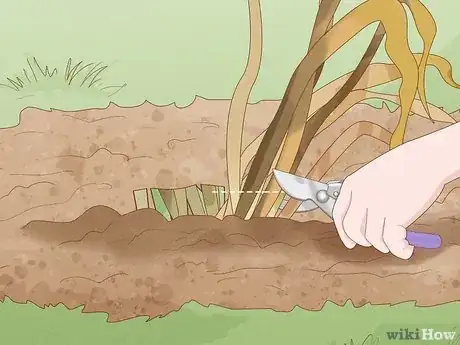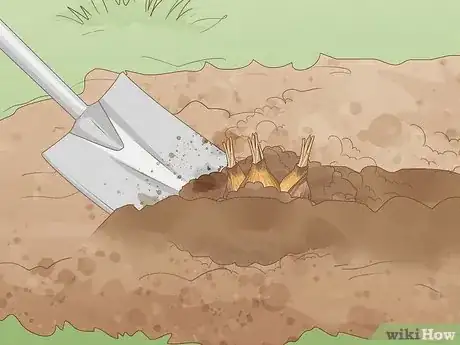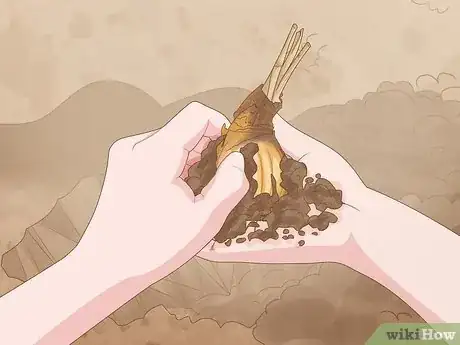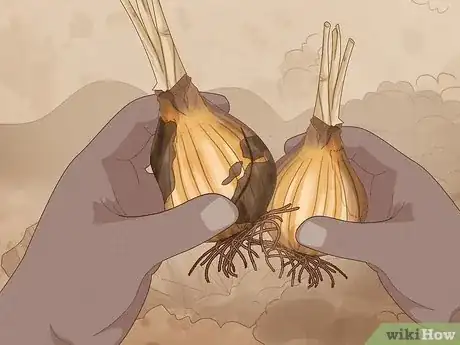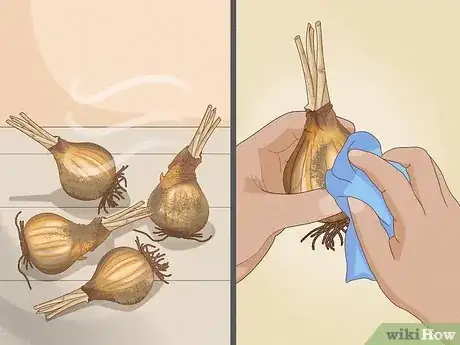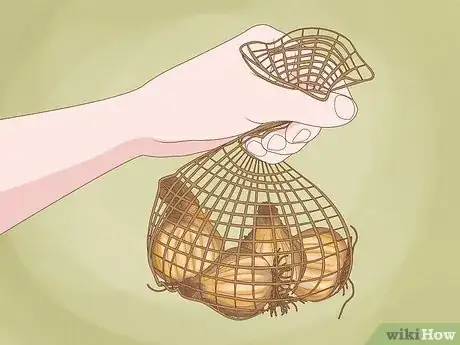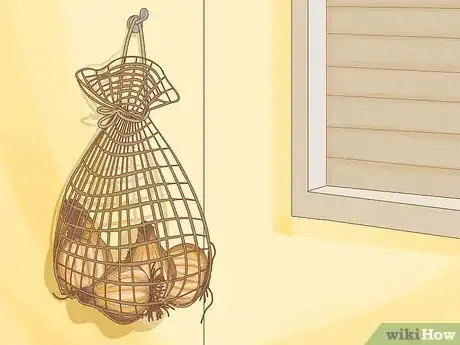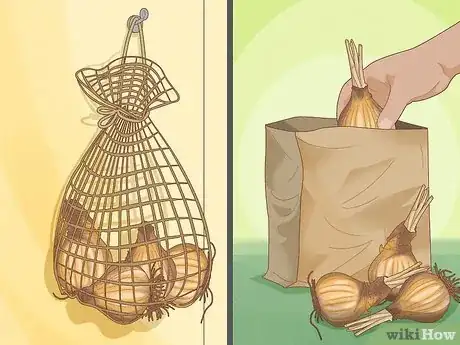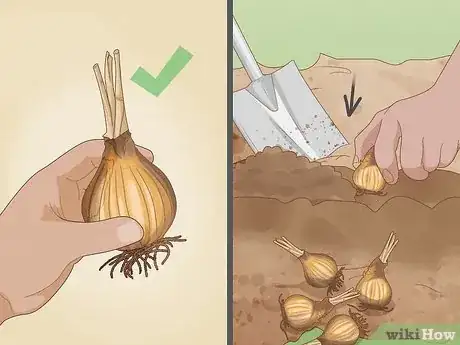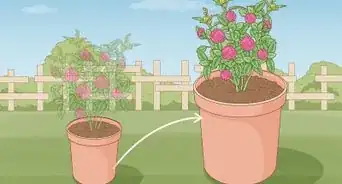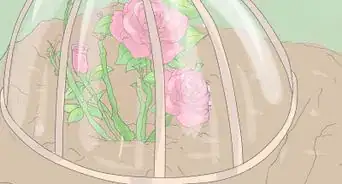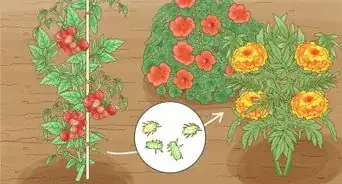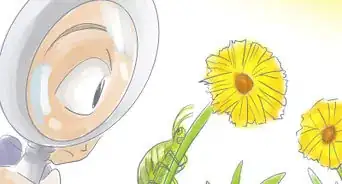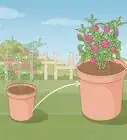wikiHow is a “wiki,” similar to Wikipedia, which means that many of our articles are co-written by multiple authors. To create this article, 16 people, some anonymous, worked to edit and improve it over time.
wikiHow marks an article as reader-approved once it receives enough positive feedback. This article has 19 testimonials from our readers, earning it our reader-approved status.
This article has been viewed 349,639 times.
Learn more...
Daffodils are a sure sign of Spring, but sadly, their bloom time is so brief. The good news is that a resurrection in the next season is quite possible. Many home gardeners leave their bulbs in the ground year around, but others prefer to bring them up and store them until the fall planting season, when they can be planted in another part of the yard. Here are a few tips on what you can do to salvage daffodil bulbs for another season by curing them.
Steps
-
1Allow the blossom and the leaves to completely fade on their own. Avoid cutting them back until they are completely withered. This will usually take about six weeks. Even though it might look scraggly, the foliage collects the sun's energy through photosynthesis and pumps it down into the bulb so it can grow next year. If you want, you can cut the spent flower early, but be sure to leave the stem intact.[1]
-
2Snip off the blossom (if you haven't done so already) and the withered leaves right at the soil line. If you’re going to leave them in the ground, that’s all you need to do. Normal watering of the garden and winter rains will not bring them up to bud until they are “ready”. That’s it. If your preference is to bring them up for over-summer storage, proceed to the next step.Advertisement
-
3
-
4Clean off the bulb by brushing excess soil away with your fingers. Any bulbs that are clumped together will probably separate on their own as you brush off the dirt. Leave the ones that are firmly attached to the mother bulb as is. Remove any “caked-on” moist soil that is clinging to the bulb.
-
5Examine the bulbs for any signs of rot, deterioration or damage that may have been caused by nibbling critters. Discard bulbs that do not appear to be healthy.[2]
-
6Set the bulb aside in open air for a short period of time (usually about an hour) until the last bit of soil has dried. Then, with a brush or a towel or rag, remove any additional clinging soil.
-
7Loosely place the bulbs into a well-ventilated bag. A mesh onion bag or the leg cut from a pair of pantyhose or nylon stocking works very well. Inexpensive tulle from a fabric store can be used to fashion a bag, too. Close up the opening of the bag with twine or string, leaving enough excess to form a loop for hanging. You can also rest them on an old window screen set on two boxes or sawhorses so that air can flow underneath them.
-
8Hang the bulb-filled bag in an area that will not be exposed to direct sunlight, heat or dampness. Far corners (away from the door) of the garage are fine, but avoid placing the bag near a water heater or laundry appliances. Generally, a shady spot with good air circulation is good.
-
9Allow the bulbs to cure. If you're using a bag and you've hung it indoors, you can simply leave them alone until you’re ready to do Autumn planting. If you used a window screen or if you left your bulbs outside, bring them in and put them in a paper bag for storage in a dark, cool, well-ventilated spot.[3]
-
10Examine the bulbs again before replanting them. Look for any signs of rot or mildew and discard them if they do not appear healthy. Plant the remaining bulbs and wait for them to bloom in the Spring!
Community Q&A
-
QuestionCan I dig up the bulbs after blooming?
 Community AnswerYou will have to make sure that you have not damaged the bulb at all, then you should be able to re-plant the bulb. Make sure you water it promptly.
Community AnswerYou will have to make sure that you have not damaged the bulb at all, then you should be able to re-plant the bulb. Make sure you water it promptly. -
QuestionDo I water the bulbs after planting?
 Community AnswerYes, definitely! Daffodil buds must be constantly wet, so make sure the soil around the bulbs is always moist and they'll be growing in no time!
Community AnswerYes, definitely! Daffodil buds must be constantly wet, so make sure the soil around the bulbs is always moist and they'll be growing in no time! -
QuestionI needed to dig up my daffodils right after the blooms were faded but before the leaves began to wilt and fade. What do I do with the plants to keep them for replanting in the fall?
 Community AnswerI was taught to braid the foliage and lay it down to keep it out of the way until it's ready to cut off.
Community AnswerI was taught to braid the foliage and lay it down to keep it out of the way until it's ready to cut off.
Warnings
- Use caution when working with garden tools.⧼thumbs_response⧽
- Protect your eyes and skin. Keep your hands away from your mouth until you have thoroughly cleaned your hands with soap and water.[4]⧼thumbs_response⧽
References
- ↑ https://www.apartmenttherapy.com/cleaning-up-the-spring-bulbs-what-not-to-do-203940
- ↑ https://hortnews.extension.iastate.edu/2003/5-9-2003/bulbrot.html
- ↑ https://www.youtube.com/watch?v=LRPBx2tXV4M
- ↑ https://www.cdc.gov/features/handwashing/index.html
- https://www.todayshomeowner.com/video/give-flower-bulbs-a-protective-bath-before-planting/

